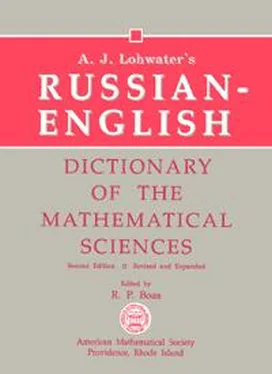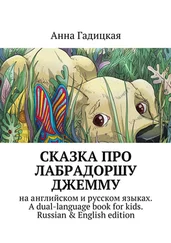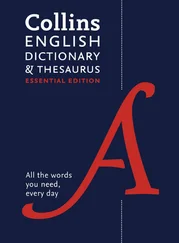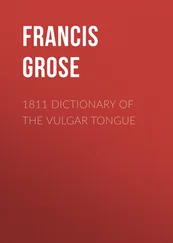ii. Examples of neuter nouns:
место ( nom. sing. ), местом ( instr. sing. )
поле ( nom. sing. ), полем ( instr. sing. )
b. Feminine nouns have the following endings in the singular: -ой, -ей, -ью.
сторона ( nom. sing. ), стороной ( instr. sing. )
функция ( nom. sing. ), функцией ( instr. sing. )
часть ( nom. sing. ), частью ( instr. sing. )
c. The plural endings in the dative case are identical for masculine, neuter, and feminine nouns: -ами, -ями.
i. Examples of masculine nouns:
интеграл ( nom. sing. ), интегралами ( instr. pl. )
делитель ( nom. sing. ), делителями ( instr. pl. )
ii. Examples of neuter nouns:
место ( nom. sing. ), местами ( instr. pl. )
поле ( nom. sing. ), полями ( instr. pl. )
iii. Examples of feminine nouns:
сторона ( nom. sing. ), сторонами ( instr. pl. )
функция ( nom. sing. ), функциями ( instr. pl. )
5. Locative case.
a. Masculine nouns have the following ending in the singular: -е.
интеграл ( nom. sing. ), интеграле ( loc. sing. )
делитель ( nom. sing. ), делителе ( loc. sing. )
b. Neuter nouns have the following endings in the singular: -е, -и.
место ( nom. sing. ), месте ( loc. sing. )
отображение ( nom. sing. ), отображении ( loc. sing. )
c. Feminine nouns have the following endings in the singular: -е, -и.
сторона ( nom. sing. ), стороне ( loc. sing. )
часть ( nom. sing. ), части ( loc. sing. )
d. The plural endings in the locative case are identical for masculine, feminine, and neuter nouns: -ах, -ях.
i. Examples of masculine nouns:
интеграл ( nom. sing. ), интегралах ( loc. pl. )
делитель ( nom. sing. ), делителях ( loc. pl. )
ii. Examples of feminine nouns:
сторона ( nom. sing. ), сторонах ( loc. pl. )
потеря ( nom. sing. ), потерях ( loc. pl. )
iii. Examples of neuter nouns:
место ( nom. sing. ), местах ( loc. pl. )
отображение ( nom. sing. ), отображениях ( loc. pl. )
| D. Nouns with Stem Changes |
There are several sets of nouns which exhibit stem changes throughout their declensions. Among these are the р-stem nouns, с-stem nouns, and н-stem nouns. Some examples are given below in partial declension, while more complete declensions are given in the Appendix.
1. Two important feminine nouns are found in the р-stem declension: мать(mother) and дочь(daughter).
мать ( nom. sing. ), матери ( gen. sing. )
дочь ( nom. sing. ), дочери ( gen. sing. )
2. Among the с-stem nouns is the neuter noun небо(sky).
небо ( nom. sing. ), небеса ( nom. pl. )
3. Two important neuter nouns are found in the н-stem declension: имя(name) and время(time)
имя ( nom. sing. ), имени ( gen. sing. )
время ( nom. sing. ), времени ( gen. sing. )
Proper names in Russian are declined. Last names may end in an adjectival ending, which decline as adjectives, or they may end in -ов( -ев) or -ин. The latter forms exhibit a mixed declension. The masculine singular is declined like a noun, except for the instrumental, which is declined like an adjective. The feminine singular is declined like a pronoun. In the plural, the nominative is declined like a short-form adjective, while the remaining forms are declined like long-form adjectives.
Russian names ending in -ых, -их, -аго, and -овоare invariable. Last names ending in -а/-яfollow the feminine noun pattern, regardless of the gender of the person to whom the name refers. Sample paradigms of declined names are given in the Appendix.
Footnotes
| 1. |
The symbol -Шrefers to a zero-ending; all nouns consist of a stem plus ending, and technically all endings are vocalic. Thus, masculine nouns in the nominative, ending in a consonant, actually exhibit a zero-ending. In the genitive plural of the feminine noun сторона, the nominative singular ending -аis replaced by the zero-ending: сторон_. ↑ |
| 2. |
Often when a zero-ending is required, a consonant cluster results, such as the -вкin перестановк; a vowel is inserted to break the cluster. ↑ |
| 3. |
Notice that the masculine accusative singular and masculine nominative singular are identical for masculine inanimatenouns. However, masculine animatenouns in the accusative coincide with the genitive. Many mathematical terms ending in -тель, which appear to be inanimate, actually act as animate nouns. For instance, in the phrase Возьмём делитель, the direct object делительappears in the animate accusative rather than the inanimate accusative делитель. ↑ |
| 4. |
In the accusative plural, the forms of inanimatenouns of allgenders coincide with those of the nominative plural, while the forms of animatenouns coincide with the genitive plural. ↑ |
The adjective in Russian may occur in both a long form and a short form. It also expresses the positive, comparative, and superlative degrees. Moreover, the long-form adjective is declined; it agrees with the corresponding noun in gender, number, and case.
Adjectives can be used in the attributive position, as in новая книга, "the new book," or the predicate position, as in книга новая, "the book is new." 1 Thus, an adjective used attributively occurs next to the noun it modifies without a linking verb, while an adjective used predicatively is separated from the noun it modifies by a linking verb. In the latter case, the predicate adjective refers back to the subject of the clause, which is in fact the noun the adjective modifies. The long form of an adjective is used in either an attributive or predicative position.
The long-form adjective is declined into all six cases, and both types of adjective express the three genders in the singular, while there is no gender distinction in the plural. The difference in form between the two types of adjective is in the form of the ending; the short form exhibits a simple ending, while the long form exhibits a compound ending. 2 In the above example, the short-form adjective ending is -а(simple), and the long-form ending is -ая(compound).
Читать дальше












